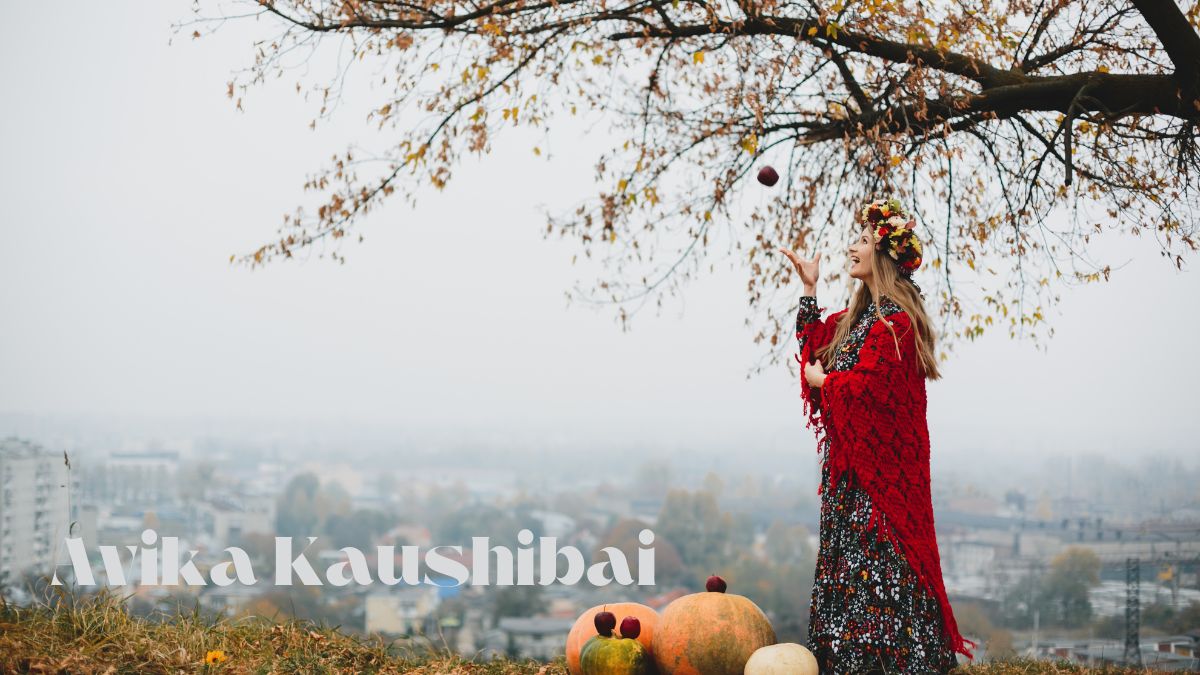BIOGRAPHY
Avika Kaushibai: Inspiring Generations Through Art and Activism

Introduction to Avika Kaushibai and her background
Avika Kaushibai stands as a beacon of creativity and courage. With her vibrant art and unwavering commitment to social change, she inspires countless individuals around the world. Her journey is not just about colors on canvas; it’s a powerful narrative woven through activism and culture. Avika’s work transcends boundaries, speaking to the heart of issues that matter most in today’s society. As we delve into her life and contributions, you’ll discover how this remarkable artist blends passion with purpose to create ripples of positive change everywhere she goes.
Early Life and Influences that Shaped Her Artistic Journey
Avika Kaushibai’s artistic journey began in a small, vibrant town. Surrounded by the rich colors and textures of local culture, she was captivated from an early age. Her family fostered a love for art; creativity flowed through their household.
Her childhood was filled with stories shared by her grandmother, each one painting vivid images in young Avika’s mind. These tales inspired her to explore various mediums—painting, sculpture, and performance arts became her playgrounds.
Nature also played a critical role in shaping her artistry. The lush landscapes near her home sparked imagination and exploration within her work. Each season brought new inspiration.
Influential mentors guided Avika during these formative years. They introduced new techniques and perspectives that expanded her understanding of expression. This blend of personal experiences set the foundation for an artist destined to make waves across communities worldwide.
The Intersection of Art and Activism in Avika’s Work
Avika Kaushibai masterfully blends art and activism, creating a unique tapestry that speaks to pressing social issues. Her work transcends traditional boundaries, acting as both a canvas and a platform for change.
Each piece she creates invites viewers to reflect on their role in society. Through vivid colors and powerful imagery, Avika communicates messages about equality, environmental justice, and cultural heritage.
Her installations often spark conversations long after the artworks have left the gallery space. They challenge norms while inspiring action within communities.
By collaborating with local organizations, Avika ensures her artwork resonates deeply with those it aims to empower. This connection transforms passive observation into active participation.
Through her lens, art becomes more than aesthetics; it evolves into a movement for awareness and advocacy. Each stroke of her brush carries the weight of voices demanding recognition in an ever-changing world.
Breakthrough Projects that Garnered Attention
Avika Kaushibai has consistently pushed boundaries with her art, leading to several breakthrough projects that captured attention worldwide. One of her most notable works is the “Voices Unheard” mural series, where she painted vibrant portraits of marginalized communities.
These murals tell stories through color and composition. Each piece serves as a testament to resilience and hope. They invite viewers into conversations about social justice and equality.
Another standout project is her collaboration with local schools, integrating art into education. This initiative not only empowers students but also ignites their creativity, encouraging them to express their own narratives through artistic mediums.
The international exhibit “Art for Change” showcased Avika’s ability to merge traditional techniques with contemporary themes. It resonated deeply with audiences and sparked dialogues around activism in the arts. Such innovative endeavors position Avika as a pivotal figure in both the art world and social movements today.
Impact on Local Communities and Global Audience
Avika Kaushibai has made a significant impact on both local communities and the global audience through her artwork. Her pieces often reflect the struggles and triumphs of everyday people, resonating deeply with those who encounter them.
In her hometown, Avika’s art initiatives bring together diverse groups. Workshops led by her empower individuals to express themselves creatively while fostering connections among community members.
On an international scale, Avika’s work is shared across platforms like social media and art exhibitions. This accessibility allows her messages to reach audiences far beyond geographical boundaries.
Her ability to blend cultural narratives into striking visuals captivates viewers worldwide. Each piece serves as a bridge between cultures, sparking conversations on pressing issues such as equality and sustainability. Through this dialogue, Avika inspires change that transcends borders and generations alike.
Challenges Faced as a Female Artist and Activist
Avika Kaushibai’s journey as a female artist and activist has not been without its hurdles. In a world where traditional norms often overshadow creative expression, she faced skepticism and resistance.
Balancing her artistic ambitions with activism required immense resilience. The societal expectations placed on women can be stifling, making it difficult for many to carve out their own identities. Avika boldly stepped forward despite the pressure.
Moreover, funding opportunities often lean towards male artists. This disparity forced her to seek alternative ways to support her projects. It fueled her determination to create spaces that uplift other marginalized voices.
Navigating these challenges only strengthened Avika’s resolve. Her experiences became a catalyst for change within the art community, inspiring others who face similar struggles in pursuit of their passions and beliefs.
Future Endeavors and Legacy of Avika Kaushibai
Avika Kaushibai’s future endeavors are as vibrant and inspiring as her past work. She plans to expand her artistic reach, collaborating with young artists from diverse backgrounds. This initiative aims to foster creativity while addressing social issues through art.
Her commitment to activism will continue through workshops that educate communities about the power of expression. By nurturing new talent, Avika hopes to create a ripple effect in local and global contexts.
Avika envisions launching a digital platform dedicated to showcasing emerging voices in art and activism. This space would serve as a hub for collaboration, inspiration, and dialogue.
As she looks ahead, Avika remains focused on leaving a lasting legacy. Her belief in the transformative nature of art fuels every project she undertakes, ensuring that her influence resonates across generations. The world eagerly anticipates what this passionate artist will bring forth next.
Conclusion: The Power of Art to Create
Art has always been a powerful medium for expression and change. Avika Kaushibai embodies this ethos through her passion and dedication to both her craft and social causes. Her ability to weave activism into her artwork inspires many.
Through vivid colors, compelling narratives, and thought-provoking themes, she touches hearts while igniting conversations about important issues. Avika’s journey illustrates how one person can influence communities locally and resonate with audiences globally.
Her legacy will undoubtedly endure as future generations continue to find inspiration in her work. The power of art lies not only in its beauty but also in its capacity to challenge the status quo, foster understanding, and drive meaningful change. Avika Kaushibai stands testament to that truth; a reminder that creativity can indeed spark transformation in our world.
BIOGRAPHY
Discovering Caley Kouko: A Journey Through Her Inspiring Story

Introduction to Caley Kouko
Caley Kouko is not just a name; it’s a symbol of resilience and inspiration. Her journey from childhood struggles to becoming a celebrated dancer has captivated many hearts. With every leap she takes, Caley defies the odds and encourages others to embrace their challenges head-on. As we delve into her incredible story, you’ll discover how one person’s passion can illuminate the path for others navigating their own difficulties. Get ready to be inspired by the remarkable life of Caley Kouko!
Childhood and Early Struggles
Caley Kouko’s early years were anything but ordinary. Growing up in a world that often felt overwhelming, she faced challenges that would shape her future.
From a young age, Caley battled against self-doubt and insecurities. The pressure to fit in weighed heavily on her shoulders. School was not always an escape; it sometimes amplified feelings of isolation.
Despite these struggles, resilience began to blossom within her. Each setback became a stepping stone toward discovery. Through adversity, she learned the importance of perseverance.
Her childhood experiences ignited a fire within Caley—a determination to rise above circumstances and chase dreams relentlessly. These formative years laid the groundwork for what was to come: a journey defined by passion and purpose rather than obstacles alone.
Finding Her Passion for Dance
Caley Kouko discovered her love for dance at a young age. The moment she stepped onto the studio floor, something clicked. Movement became her voice, an expression of joy and freedom.
Every twirl and leap felt like flying. She immersed herself in various styles, from ballet to hip-hop. Each class was an adventure that fueled her passion further.
Dance wasn’t just a hobby; it became an escape from life’s challenges. It offered Caley solace during tough times and gave her strength when she needed it most.
Surrounded by supportive teachers and friends, she blossomed artistically. With each performance, she gained confidence.
The world of dance opened doors to endless possibilities for Caley Kouko—a realm where dreams transformed into reality through hard work and dedication.
Overcoming Physical Obstacles
Caley Kouko’s journey is a testament to resilience. Despite facing significant physical challenges, she has never let them define her.
From early on, Caley encountered limitations that many would find daunting. Yet, instead of shying away from the dance floor, she embraced it with determination. Every setback became a stepping stone toward her goals.
Her tenacity shines through in every performance. With each graceful movement, Caley showcases not just talent but an unwavering spirit. She demonstrates that obstacles can be transformed into opportunities for growth and expression.
Support from her community played a crucial role. Friends and family rallied around her dreams, providing encouragement when times got tough. This network helped foster her belief in herself.
Caley’s story inspires others grappling with similar struggles to push forward and chase their passions fiercely. Her ability to rise above adversity serves as a beacon of hope for many aspiring dancers everywhere.
Becoming a Role Model for Others
Caley Kouko has emerged as a beacon of hope for many. Her journey, marked by resilience and determination, showcases the power of perseverance.
Through her dance performances, she inspires countless individuals facing their own challenges. Caley’s dedication to her craft speaks volumes about what can be achieved with hard work and passion.
She openly shares her story on social media platforms. This transparency allows others to see that obstacles can be overcome. Her authenticity resonates deeply with fans who look up to her.
As a role model, Caley encourages people to embrace their uniqueness. She shows that vulnerability is not a weakness but rather a strength that binds us together in shared experiences.
Her influence extends beyond dance; it’s about living life on one’s own terms while lifting others along the way. In this regard, Caley Kouko truly stands out as someone worth admiring.
Using Her Platform for Good
Caley Kouko understands the power of her voice. With a passionate heart, she uses her platform to shine a light on important issues.
Through social media, she connects with fans and shares stories that matter. Her messages resonate deeply, inspiring others to take action in their own lives.
Caley speaks openly about mental health awareness and body positivity. By sharing her experiences, she breaks down barriers and encourages conversations that often go unspoken.
She also collaborates with organizations dedicated to helping those in need. Whether it’s fundraising or raising awareness, Caley is committed to making a difference.
Her influence goes beyond dance; it’s about creating change in communities everywhere. Through advocacy and support, Caley empowers others to find their voices too.
The Impact of Caley’s Story
Caley Kouko’s story resonates with many. It serves as a beacon of hope and inspiration for those facing adversity. Her journey showcases the power of resilience, reminding us that obstacles can be transformed into opportunities.
Through her challenges, Caley has ignited conversations about perseverance. People are drawn to her authenticity and determination, which fuels their own aspirations.
Her influence extends beyond dance; it touches lives across various fields. Many find courage in sharing their struggles after hearing her narrative.
Social media platforms amplify her message further. Followers celebrate not just her accomplishments but also the vulnerability she displays along the way.
Caley empowers others to embrace their own stories and advocate for themselves. The impact of her journey is profound, creating ripples that inspire change within communities around the world.
Conclusion
Caley Kouko’s journey is a testament to resilience and determination. From her challenging childhood to becoming an inspiring figure in the dance community, she embodies the spirit of overcoming adversity. Her story reaches far beyond personal triumph; it resonates with countless individuals facing their own struggles.
Through her dedication and passion for dance, Caley has not only broken through physical obstacles but also emerged as a role model for many. She encourages others to chase their dreams relentlessly, proving that barriers can be shattered with hard work and belief in oneself.
Using her platform effectively, Caley advocates for causes close to her heart. She brings attention to important issues while uplifting those who are often overlooked. By sharing her experiences and challenges openly, she inspires change and fosters hope among people from all walks of life.
The impact of Caley Kouko’s story extends well beyond the stage. She serves as a beacon of light for anyone seeking motivation or guidance on their path toward self-discovery and empowerment. Her legacy will continue inspiring future generations to embrace their uniqueness fearlessly.
Every step taken by Caley symbolizes strength against adversity—a reminder that our stories can empower others in profound ways.
-

 TECHNOLOGY1 year ago
TECHNOLOGY1 year agoTop 5 Tips for Mastering in_a_dndmixin_drag in Your Campaigns
-

 TOPIC1 year ago
TOPIC1 year agoExploring the History and Culture of Rosewellsk
-

 TECHNOLOGY1 year ago
TECHNOLOGY1 year agoYMoviesHD vs Other Streaming Platforms: A Comprehensive Comparison
-

 TOPIC1 year ago
TOPIC1 year agoBehind the Scenes: The Philosophy and Vision of PhmHaven
-

 TOPIC1 year ago
TOPIC1 year agoThe Rise of Tribute Printed Pics: Honoring Life Through Photography
-

 TOPIC1 year ago
TOPIC1 year agoA Beginner’s Journey with Lwedninja: From Novice to Pro
-

 TOPIC1 year ago
TOPIC1 year agoIs Finizona Free? Unpacking the Costs Behind This Popular Platform
-

 TOPIC1 year ago
TOPIC1 year agoDecoding m0therearf: Why This Buzzword Matters in Today’s Culture
